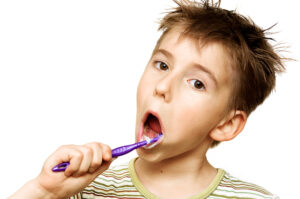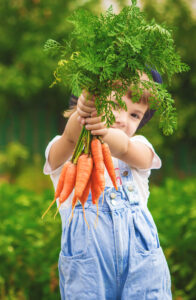Back to School with Healthy Teeth

For many families with children, school is just around the corner, and being prepared can make it less scary. Part of that preparation is making sure that your kids have a healthy mouth so that they can concentrate and learn while they are in school. Some schools will require a dental exam or screening before the first day, so you will want to check for any requirements. Kids also spend a large part of the day at school, and while doing so, they will be eating 1-2 meals plus snacks. Because of this, I will share some tips to keep your kids as healthy as possible.
It can be challenging to get an appointment with your dental provider at the last minute, so do not wait to make an appointment for an exam. Seeing your dental provider in the summer can be easier if there is no school to miss, and it is an excellent way to start the school year and make sure any treatment is completed before school begins. This will decrease the possibility of toothaches, infection, and difficulty concentrating in school. Not only that, but children will also feel better about themselves if their mouths are healthy and if they are starting school for the first time. This is especially important with big transitions and when meeting other kids for the first time. When their oral health is in good shape, it is one less thing for them to worry about when having new experiences.
 While at school, most kids will eat a snack and their lunch, and most do not brush their teeth at school. This means food will likely be left in their teeth for most of the day. When I am at school with the dental clinic doing sealants, the kids who come in just after they have had a snack or lunch are the toughest. Usually, they have bits of orange-colored crackers sticking to the grooves of the teeth. Depending on the teeth (some have deeper grooves than others), they can be difficult to remove. Other kinds of crackers and foods made with white flour turn to sugar and are delicious food for the cavity-causing bacteria. Before I can do an assessment or sealants, I need to brush their teeth to remove the leftover food. The cavity bugs or sugar bugs (bacteria) love to eat those foods and, as I tell the kids, poop all over the teeth and make acids that dissolve the tooth, eventually becoming a cavity.
While at school, most kids will eat a snack and their lunch, and most do not brush their teeth at school. This means food will likely be left in their teeth for most of the day. When I am at school with the dental clinic doing sealants, the kids who come in just after they have had a snack or lunch are the toughest. Usually, they have bits of orange-colored crackers sticking to the grooves of the teeth. Depending on the teeth (some have deeper grooves than others), they can be difficult to remove. Other kinds of crackers and foods made with white flour turn to sugar and are delicious food for the cavity-causing bacteria. Before I can do an assessment or sealants, I need to brush their teeth to remove the leftover food. The cavity bugs or sugar bugs (bacteria) love to eat those foods and, as I tell the kids, poop all over the teeth and make acids that dissolve the tooth, eventually becoming a cavity.
 For younger kids who go to preschool or daycare, it is important to know that they will put things in their mouths. When they do this, whatever bacteria they have will get on the toys, then the next child will do the same, sharing bacteria back and forth. This is also true in our own families. We share spoons, cups, and kisses (for good reason). When other kids and adults in the family have gum disease and/or tooth decay that has not been taken care of, there will be higher levels of bacteria that we can share. This will make it more likely to have tooth decay and gum disease. This is another reason getting all dental treatment done is so important. But do not despair! I have some tricks to help with this.
For younger kids who go to preschool or daycare, it is important to know that they will put things in their mouths. When they do this, whatever bacteria they have will get on the toys, then the next child will do the same, sharing bacteria back and forth. This is also true in our own families. We share spoons, cups, and kisses (for good reason). When other kids and adults in the family have gum disease and/or tooth decay that has not been taken care of, there will be higher levels of bacteria that we can share. This will make it more likely to have tooth decay and gum disease. This is another reason getting all dental treatment done is so important. But do not despair! I have some tricks to help with this.
Here are some tips for everyone:
- Teach your kids to drink water after eating, swish a little, then swallow or spit it out. This will help clear some of the food.
- Put one teaspoon of granulated xylitol* in a 16 oz water bottle that they take with them to school. Drinking two- 16 oz.
 bottles a day will help decrease the harmful bacteria. This
bottles a day will help decrease the harmful bacteria. This - Put tooth-friendly foods in your child’s lunch box. Give them foods high in protein, as protein helps make your mouth less acidic. When our mouth is acidic, the bacteria thrive. Choose to eat more cheese, nuts, soy, lean chicken, beef, pork, lentils, eggs, low-sugar yogurts, and milk, as these foods are high in protein.
- Eat foods at the end of the meal that help “clean up”– these foods are crunchy and crisp and help scrub the other foods away from your teeth. These foods do not replace brushing and flossing but can sure help.
- When you pack their lunch, label the “clean up” foods they should eat after finishing their other food. These “clean-up” foods include celery, cucumber, apples, pears, lettuce, cheese, carrots, and even popcorn. If your child likes raw broccoli, cauliflower, or “trees,” as we used to call them, these will also work. These foods help clean away other foods that your kids have eaten.
* There are studies on the use of xylitol and cavity prevention. Studies show that mothers chewing xylitol gum decrease the bacteria that cause tooth decay in children. Xylitol is available online and at health food stores such as First Alternative Coop, Market of Choice, and Whole Foods. I will write about xylitol in another blog. For now, the recommended amount is 6-10 grams a day, spaced out over the entire day. Never give it to animals. Start with just a little xylitol when first using it. Some people will have loose stools when trying it for the first time, and working up to the 6-10 grams works better when doing it slowly.